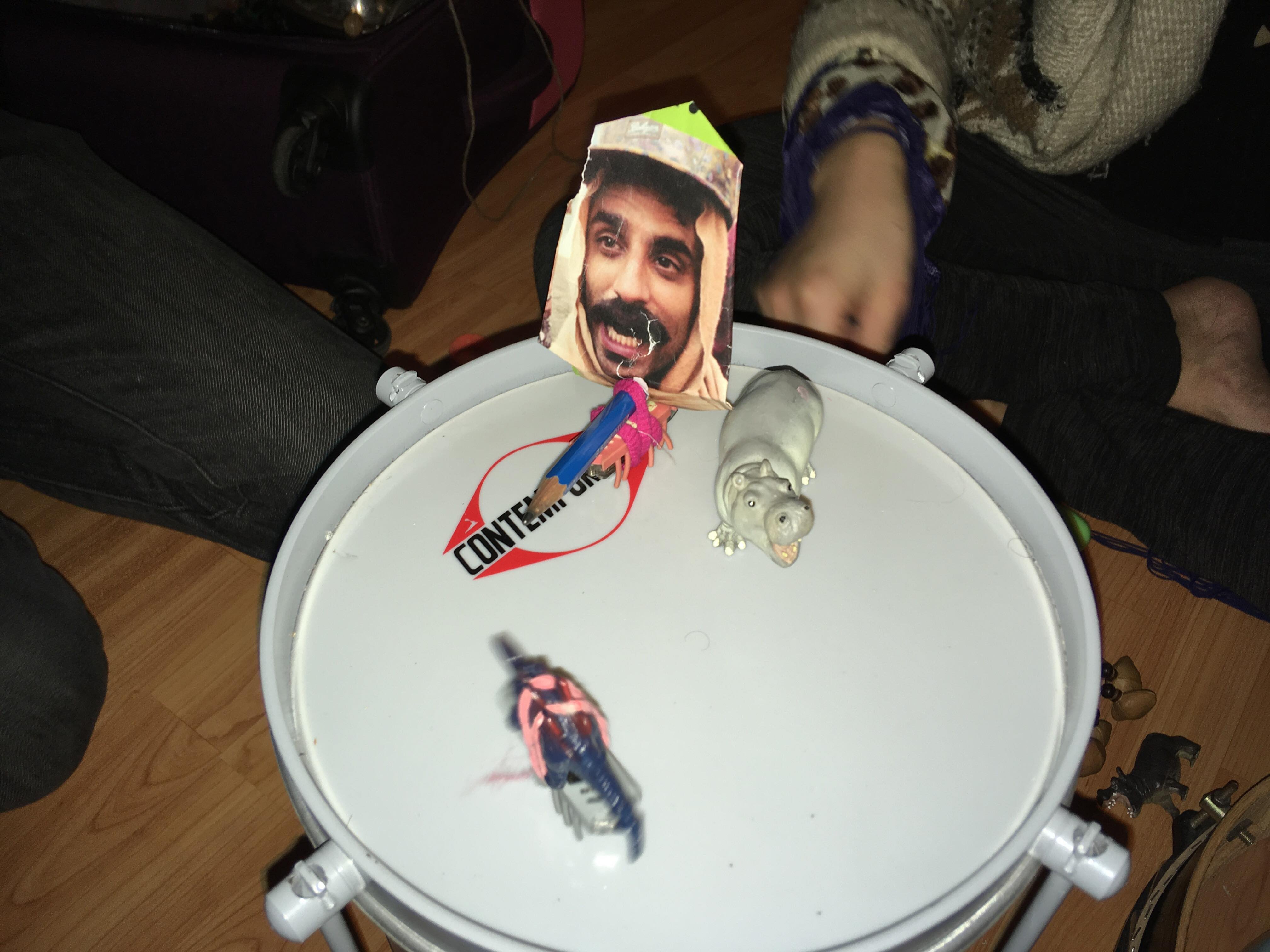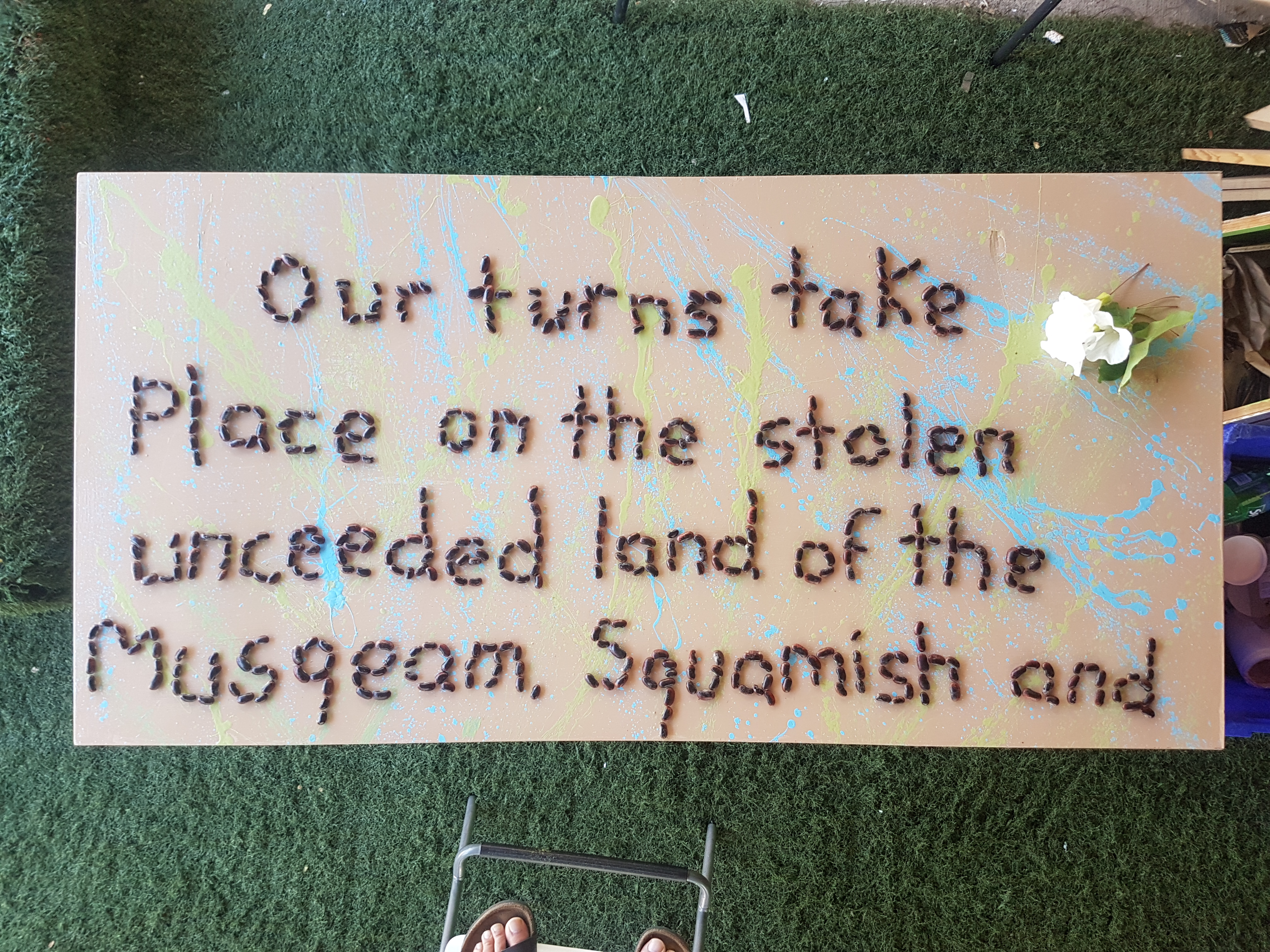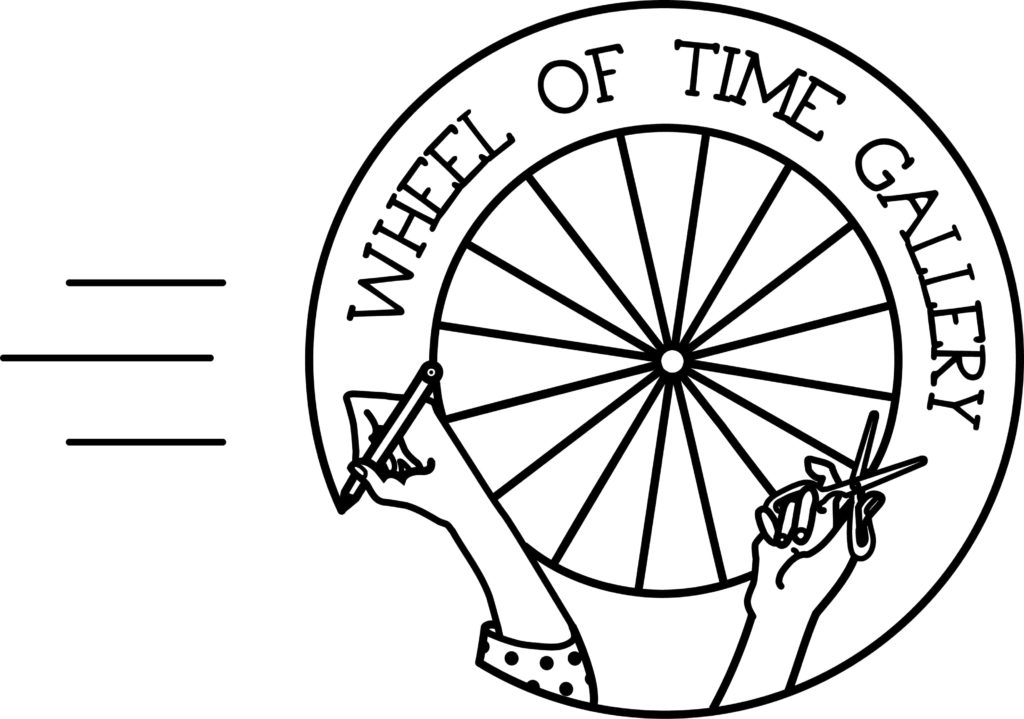
The Wheel of Time Gallery is place for artists and performers to showcase their work. The artists that have been involved have serendipitously found this space through interactions in the city– then we find ways to work together to showcase their art or performance. This has been an experiment in curation through direct interaction in the city.
Click on the links below to see past shows and the creation of the gallery. In addition to the Wheel of Time Gallery, we have also created studio and workspace for artists to come and make art and be a part of this project.
Past Shows:
- Cycle #1: Grand Opening of The Wheel of Time Gallery: How well do you know your Neighbours?
- Making of the Wheel of Time Gallery
The Final Exhibition
at the Wheel of Time Gallery:
My Mental Institution:
by Raj Gill.
Below is the My Mental Institution trailer video. This gives a bit of context to the exhibition.
The exhibition is a Virutal Tour and can be found below. You can view it on this page, or you may view it in full screen by clicking the link below.
(the VR tour may need a bit of time to load as it is dense with data. And if too many people are viewing it, it may be slow to load)
https://wheeloftimegallery.temporaryframes.space/
I would like to thank everyone that was a part of the Kids Castle, Temporary Frames, and the Wheel of Time Gallery experiment.
Below you will find a write-up of the impetus of this project and the closing of it.
Thank you, — raj —







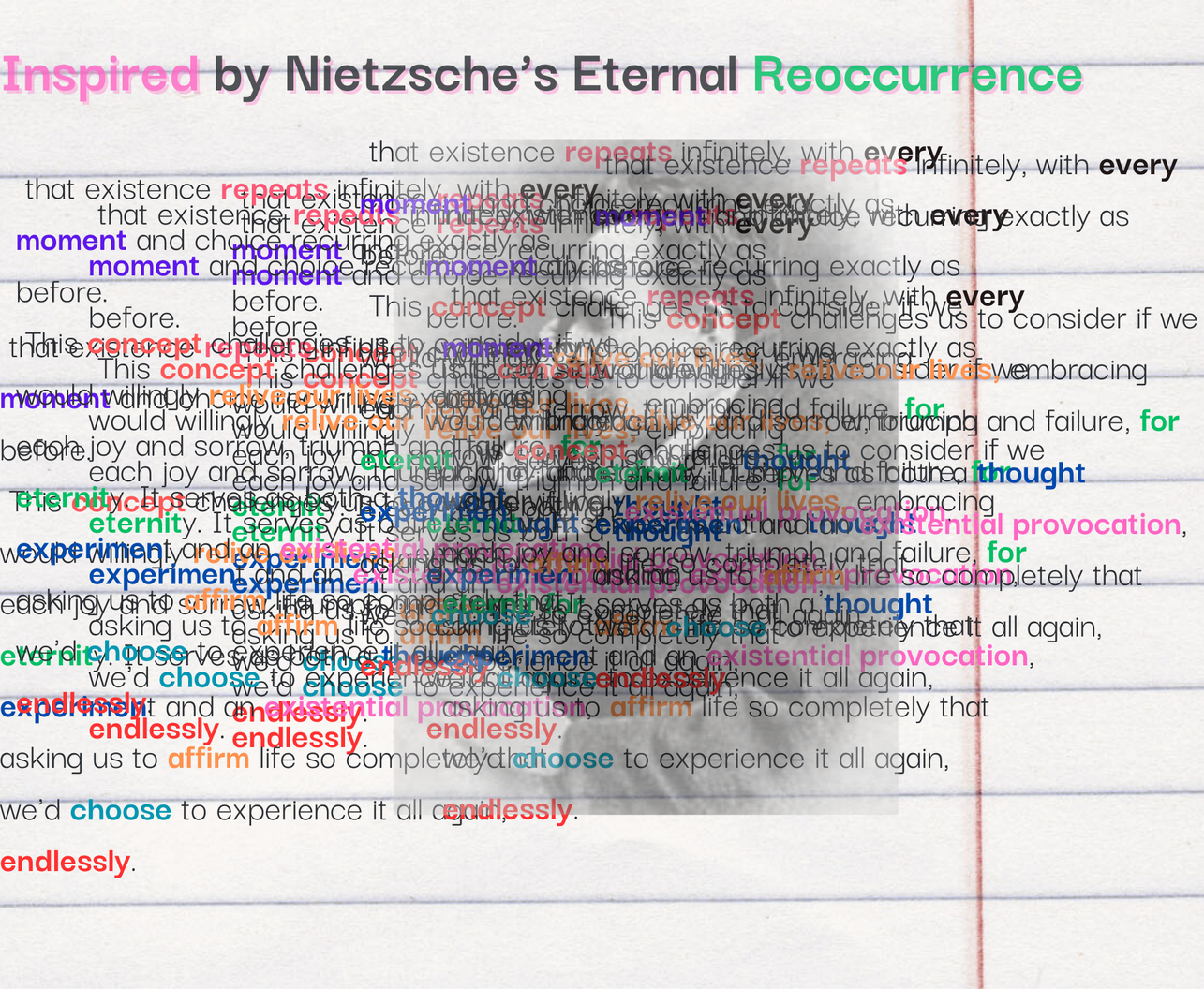

“Whatever has the nature of arising has the nature of ceasing.”
Mandala creation and destruction edited from the Ron Fricke movie Samsara
Part 3: Art as Experience
In 2018, our artist collective was in search of a new work and residence space. We found a tear-down house that would be demolished to make way for apartments. They estimated we had 1 to 2 years here.
My first encounter with this house presented itself not only as structure but as latent and expansive imaginative possibilities, in a way that Cervantes’s Don Quixote would blur the boundaries between reality and perception. To impose my own romanticised visions on the mundane realities of the world. The dreamer’s disease. These are the high-energy games that fantasy prone artists can be seen playing. As I walked through these soon-to-be temporary frames, a house we were told would only remain standing for a year or two, as they would be engulfed into the common Vancouver housing narrative of the “tear-down house.” “The Vancouver Special,” the housing style that would define an era and history, is now facing it’s turn in the impermanence dance.
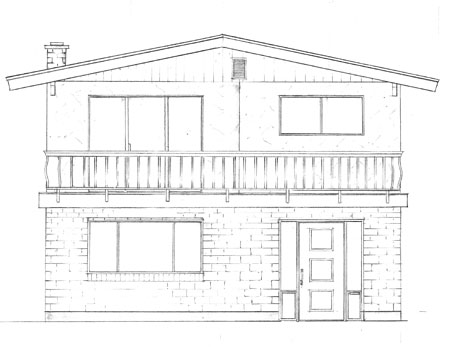
https://www.vancouverheritagefoundation.org/house-styles/vancouver-special/
The house’s impending fate of destruction, change, and temporariness would be what I annealed to. It was a chance to follow the life and death of the house. Through all the noise that sometimes makes up our clouded existence, this house pierced into my artistic sensibilities. To be moved and awakened to the possibilities of what the house could be, to celebrate it, to allow it to work on me as much as I wanted to work on it. This was not just a house. It was a living, resonating chamber that the mythos and eros could pulsate through. The muses were here, taking residence. It was a perfect embodiment of the “Temporary Autonomous Zone,” a concept coined by Hakim Bey in his 1991 book about the spontaneous creation of a space to allow freedom of expression and creativity without restricting forces. The developer gave us permission to do what we wished with this house.
Vancouver, the city of displacement, is the common artists and renters struggle. This was not my first experience of being uprooted, it was the third time. Standing in this space, the house was the symbol of this collective struggle. Could this house slated for demolition be more than a temporary residence? Could the house be used as an instrument of social, personal, and artistic engagement, or at least allow unfolding moments of play, in the backdrop of the habituated structures of modern reality? The insight from Bergson is that life is a continuous process, made of moments, each one of which is new and unforeseen, and it is for this reason that we may hope for something better at every moment.”
Art as a medium affords a certain freedom—to treat this house as a living canvas, a mandala—to rework, rewrite, and reimagine a familiar narrative.
These were the initial reflections. The house was not just a canvas but a source of primordial energy. It was an opportunity to temporarily treat life as an embodied thought experiment. Permission to use this house for a year or more, as we desire. It was a call to subvert the status quo, and find a new narrative about this housing despair. The house vibrated with potential to disrupt, redefine, and inspire. To use the unfolding and emerging art practice that would treat art as a life experience, as Dewey would argue in his book “Art as Experience.”
“In common conception, the work of art is often identified with the building, book, painting, or statue in its existence apart from human experience. Since the actual work of art is what the product does with and in experience, the result is not favourable to understanding. In addition, the very perfection of some of these products, the prestige they possess because of a long history of unquestioned admiration, create conventions that get in the way of fresh insight. When an art product once attains classic status, it somehow becomes isolated from the human conditions under which it was brought into being and from the human consequences it engenders in actual life-experience.”
What I value from Dewey’s insights is not exalting art onto a pedestal that becomes inaccessible to the experiencer. There is a certain intrinsic connection that the artist and art experience can share. Life is interconnected, and art can be an embodiment of living itself. Art can serve as a mechanism through which communities can connect and express themselves. Art is not only a spectacle but a living and breathing form.
Why should a bedroom not be reconceptualized into a gallery. Or installations finding place amongst those halls. It’s through transforming how we converge that art and art making can defy conventional paradigms on how we engage with art in the modern world. By opening the house as an art and gallery space, it serves as an antidote to the isolation and separation between art and the art making process.
(above is the video I made as an invitation to the community to come participate in this project.). The Wheel of Time Gallery had not been realized yet and we were still playing with ideas. Let’s paint the house white and create an empty canvas.)
Above is an example of some of the art shows we put on at the Wheel of Time Gallery.
The House and the Inspiration:
There are moments of profound intuition, when a true essence is revealed. A deep resonance with the subject and material transcends familiar conceptions, skills, and techniques. As artists, not only do we sharpen our tools, but we attune ourselves to sources of creation itself. We don’t know where we might discover or find this, but when we do , there is particular harmony and rhythm to which allow this work to unfold. Until it doesn’t because the mind is there to get in the way of it. If we can allow merging to process and follow that impulse, it’s aligned with Bergson’s philosophy of art that is linked to his concept of duration (duree). This process is not static or segments time, but it is fluid and indivisible. The essence of lived experience that can’t be fully expressed through language.
I found myself in my personal realm of intuitive unfolding with this house. After the initial spark, I remained yearning for a deeper meaning to guide this work. I didn’t know what this was, as I was in the process of discovering, listening, and experiencing . Bergson emphasizes the role of intuition in both undertaking and creating art. He contracts intuition with the analytical, spatializing approach of science. Intuition allows one to graph the essence of an object or experience directly, without breaking it down into discrete parts.
Rationalizing and intellectually, this project did not make sense. There was no monetary value from it; there was no funding source. There was investment in energy, time and involved the disruption of regular living activities. There was potential for something. The ability to experience and experiment with life itself. Being open to the world, to experience life itself, and to be affected by sensations, perceptions, and impressions that have on us, there was an alchemical merging of these experiences into a single, revelatory “ah ha” moment. This moment of insight came as a rush, a powerful source. There was already a sense of an intuitive alignment collecting with various constellations of the multitude of selves.
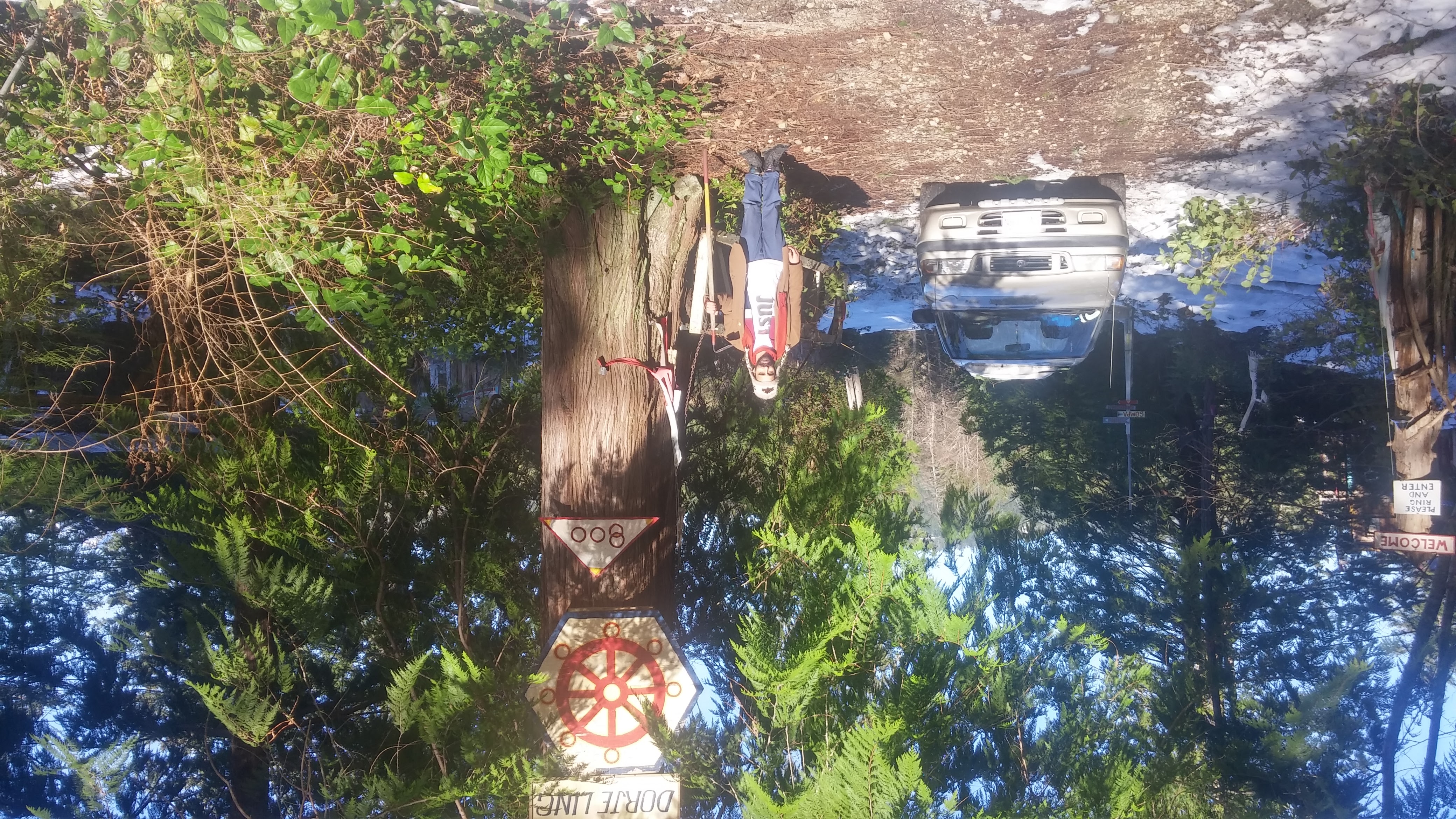
It was through a chance encounter with the Kalachakra (Wheel of Time) Tantra at the Dorje-Ling Dharma Centre, an ancient and intricate system of Tibetan Buddhism, that a cyclical path opened up. I want to reflect and share these sources of inspiration to reveal the power of these experiences and the quality and reverence they hold. A deeper felt connection, that connects to more parts of the Self, the stronger the resonance and more potential energy to further and engage the work. The Kalachakra Tantra is a mandala, teaching and symbolic representation of the nature of time. It spoke to the core of my artistic impulse. The creation and destruction of the Kalachakra sand Mandala demonstrate the impermanence of existence and the transient nature of all material forms. It shows the cyclical nature of life and death. The house served as a crucible to explore these themes from a performative and artistic creation.
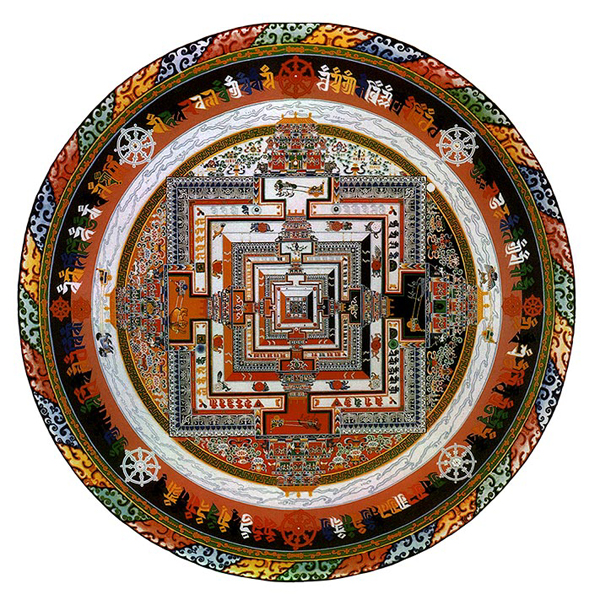
The film Samsara by Ron Fricke, a visceral cinematic meditation on the temporal nature of existence, also shared similar philosophical underpinnings to the Kalachakra. These concepts crystallized and resonated deeply with the intuitive currents that had been set in motion in me. The film’s depicts Buddhists monks in the construction and ultimate dissolution of the sand mandala. This became a potent symbol, an guiding force that imbued the house project with a sense of purpose and sacredness.
The house itself became a living mandala to explore the transience of the material world. Each brushstroke, each performance, each interaction became a meditation on the continuous flow of life.
My Mental Institution:
Editions of Reality
In the final two months of the house’s demolition, and within the constraints imposed by Covid-19. The planned group show changed to a solo exhibition due to local laws restricting gatherings. This created an unexpected opportunity to explore a personal narrative within the confinements of the house. It was a ripe opportunity to weave in the emerging global theme of isolation into my artistic work with this house.
In 2005, I was attending an experiential course on human development. There was an exercise that left a deep impression on me and ultimately inspired this solo exhibition. We were asked to volunteer at a mental health facility. We were told to dress as clowns and spend the day interacting with the residents. The prompt we were given was to bring joy. I had concern at first about this. I feared that this act might be offensive or demeaning, this was also coupled with my own negative biases towards clowns at the time. Clowns represented to me a type of lowbrow art and were somewhat unsettling. Nonetheless, I participated and followed through with instructions.
Before we move on, let’s try to find a working definition on what we mean by “clown” and look at a bit of clowning history. Clown and clowning are terms that can be slippery—even people deep in these traditions have a hard time agreeing on a single definition. In North America, clowning often carries a negative connotation and has become something of a cultural meme. Clowns here tend to be portrayed as either scary, evil, and creepy, or, on the flip side, as children’s entertainers and mascots. There’s certainly no shortage of people who’ll tell you they’re afraid of clowns. It wasn’t always this way. “Clowning has a rich and varied history across many cultures and traditions. Today we’re seeing a reemergence of clowning. It is as a tool that can explore and expand, human development, expression, and performance.
The history of clowning is ancient and diverse. Its roles have changed dramatically over many centuries and civilizations. The roots of clowns originated in prehistoric societies such as Egypt, Greece, and Rome. They were known to be satirists and entertainers. Clowns have significant spiritual and social functions in Native American cultures. For example, the Plains Indians’ Heyoka served as both spiritual guides and tricksters, challenging social norms and providing new insights through humour. Clowns can play many roles, such as entertainers, healers, and subverters. 1
Physical theatre and clown training became fundamental tools I use now in my artistic and professional work.
That experience of spending the day at the mental health facility, proved to be deeply rewarding. The majority of residents were happy and excited to see us, and there were the few who kept to themselves. We engaged with them throughout the day, listening, singing, sharing jokes and having joyful moments. I observed something in many of the residents here. They seemed to experience their lives in these small repetitive loops, endlessly reenacting the same scenes as if they were trapped in a perpetual cycle.
David McMurray Smith notes in his “Considerations for Clownology” that we are constantly editing what we see and experience into frameworks for interpretation and understanding. This process helps us orient and identify ourselves within our experiences. These interpretations and understandings then become what we might consider our ‘realities.’”
Smith Presents degrees of perceptual Editions of reality:
Edit 1 – Perception: This is the initial level where we organize the phenomena around us through our senses: sight, sound, taste, touch, and smell.
Edit 2 – Meaning (Cognition): At this level, we associate our perceptions with our existing memories and categorize them with relative value.
Edit 3 – Predictability, Repeatability: Here, we recognize the repetition of patterns, which may then be consciously governed.
Edit 4 – Institutionalization (Ritualization): This is the stage where a pattern of action becomes so well-practiced that it becomes pre-conscious and almost an “automatic routine.”
Edit 5 – Re-ordering, Returning to Chaos via Predictability Bypass: These are experiences that do not fit within our current understanding, provoking opportunities for new awareness.
The Present Event (Apparent Chaos): This refers to the undifferentiated, uncategorized elements or phenomena that occur before our genetically encoded memory processes our sensory experiences and categorizes them for association with other aspects of our memory. (2)
It seemed some of the residents at the facility were experiencing life in these small loops of Edit 4, Institutionalization (Ritualization). I witnessed a man continually reliving a scene as if he were a cowboy singing and acting like a Elvis Prestley. It was the “automatic routine.”. This resident was stuck in this edition of reality and did not have access to his predictability bypass, which would have allowed him new opportunities for new awareness. Perhaps coming dressed as a clown was our attempt to create a predictability bypass, an element of surprise and novelty. How often do we find ourselves in deep grooved edits that we have practiced unconsciously numerous times, that we don’t recognize that we are in particular edit? Then the part that has awareness of the Self, becomes inaccessible.
When I was converting my room into a gallery in 2018. I felt this deep impulse to paint the entire space white—the ceilings, the walls, and the floor. Upon completion, I sat in this freshly painted white space, which echoed the cultural meme of the white padded asylum room. A cosmic joke seemed to unfold before me. Here I was a trained clown, sitting in my self-constructed asylum. The moment felt like a foreshadowing of my earlier experience at the mental health facility.
What intrigued me was the contemplation of my own personal loops and institutionalized editions of reality. How different am I from the residence in that mental health facility? Resident’s appeared to be stuck in their edits, but what about my own? Yes, I possess a perceived sense of agency and independence, but I could not help but notice that I too live in various recurring edits of reality. I am not only referring to institutionalization edits like mundane activities, like how I drink water, the route I take to work, and how I brush my hair, though these are important things to have observation for. I am curious about the larger themes in my life and how these events could be playing out cyclically.
Why do this–to engage in self-reflection? Is there value in understanding our consciousness and what our existence is about in this moment in time and place? Or is it simpler to live and not be bothered by such inquiries. Perhaps we don’t have a choice in the matter. Some may be forced to reckon with questions and how we play with life and become hyper-aware of the observer’s lens, while others may play unaware of their participation. Or we may numb ourselves to have to bear these questions, until something cracks in our sense of reality. How much autonomy do we have when our conditioned selves overlay our choices?
What is my potential, What am I, how am I, and who am I? These questions have followed me indirectly in my younger years, at a time when my life was saturated with strife and suffering. Being witness to contradictions and paradoxes in my family and my culture, whom could I trust when it was clear that the ones around me lacked a dependable ethos on a life that resonated. To become aware of my cultural, social, and biological conditioning and the various limits imposed on myself. I longed for change. I noticed life was exhibiting signs of recurring cycles—spirals of certain feelings, states of mind, and experiences.
The Eternal Return: The Wheel of Time
The Eternal Return, a philosophical idea poised by Friedrich Nietzsche that holds that time repeats itself and that the same events repeatedly occur. (3) There are many ancient cultures and philosophies that have explored this concept. The Buddhists have contemplated through Kalachakra Tantra, the wheel of time. Friendrick Nietzsche explored these concepts in his work and believed in the “horror of existence.”. Life is filled with meaningless suffering and presents the idea of the eternal recurrence that life repeats infinitely and that every detail remains exactly the same in each version. Nietzsche proposed a thought experiment in his work that asked for an acceptance of this concept and challenged his audience to live their lives acknowledging the horrors of the suffering life brings and the paradox–If life does endlessly repeat, what do you choose to put in that life–what life would you want to repeat. (4)
This idea is wonderfully reflected in Harold Ramis film Groundhog’s Day (5) Phil Connors, played by Bill Murray, is a TV weatherman who is deeply dissatisfied and cynical with life. He ends up waking up and reliving the same day over and over, as if we were in a time loop. This forces Phil to engage with life from many perspectives and to understand his life choices and how to engage with life when the same day keeps on repeating. We follow Phil Connors trajectory of searching for meaning, as he partakes in hedonistic and nihilistic behaviours, but as the days repeat, he becomes more interested in a deeper sense of fulfillment. Being forced to relive the same day over and over, and trying out as many editions of reality, he begins to experientially understand what is deeply impactful and meaningful for him, and he eventually gets out of the loop.
My Mental Institution:
My Mental Institution was an embodiment of the thought experiment on exploring the meta nature of mind/body as our mental prison.
I explored the various Editions of my reality and how the various selves are in constant negotiation. In the waiting room of my mental institution, it says:

If we are in our mental prisons, what type of programming would take place.
And if we are the directors of our institutions, what type of programming would we create in order to further the fullest potential of the many selves.
I am grateful to be in the world and have a perceived sense of agency in the life I am creating. My world is richer when it is in relation to other beings and other forms of consciousness.
Sources:
1. Keisalo-Galván, M. (2008). Clowns in Anthropology: A review of the literature . Suomen Antropologi: Journal of the Finnish Anthropological Society, 33(3), 39–48. https://doi.org/10.30676/jfas.v33i3.116384
2. Smith, David (2019), Considerations for Clownology”, Self Published
3. Carollo, B. (2024). Nietzsche and the Mysticism of Apotheosis. Journal for Continental Philosophy of Religion.
4. Kain, P.J. (2007). Eternal recurrence and the categorical imperative. Southern Journal of Philosophy, 45, 105-116.
5. Ramis, H. (Director). (1993). Groundhog Day [Film]. Columbia Pictures.
